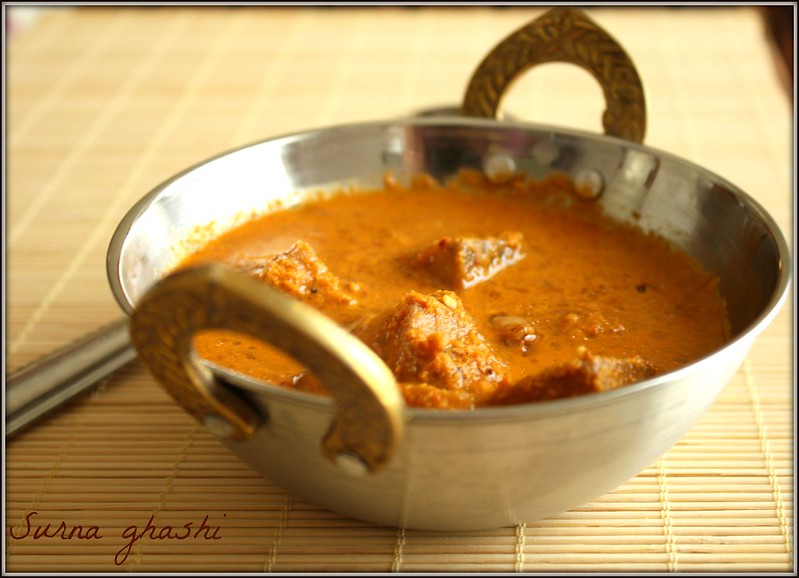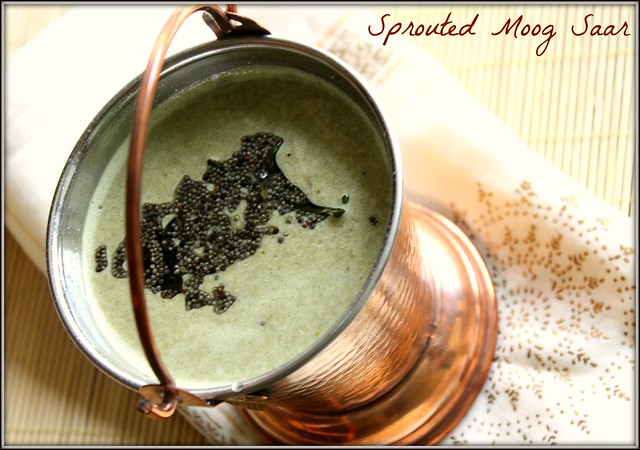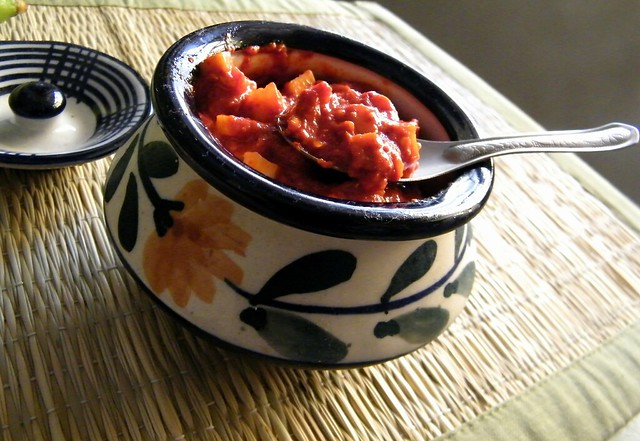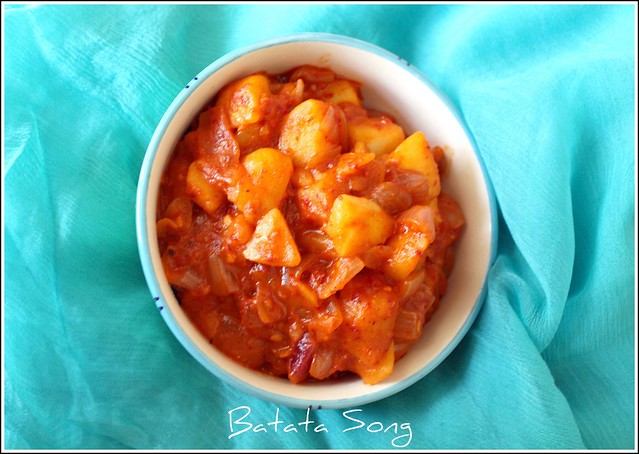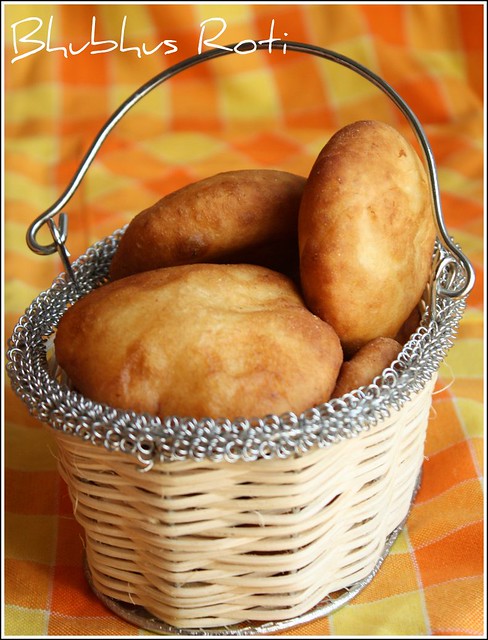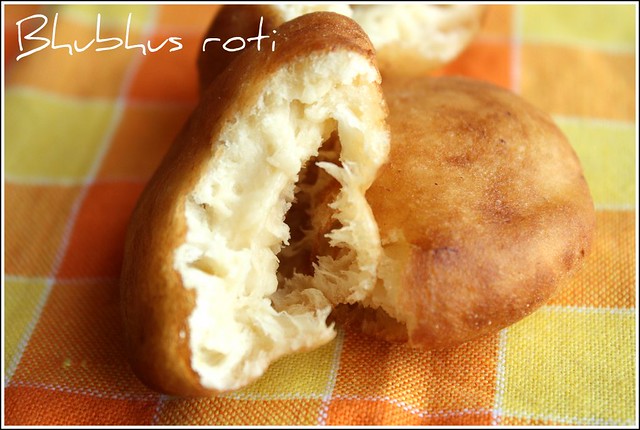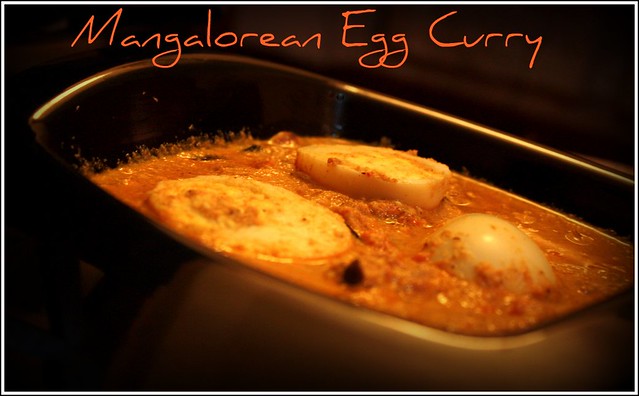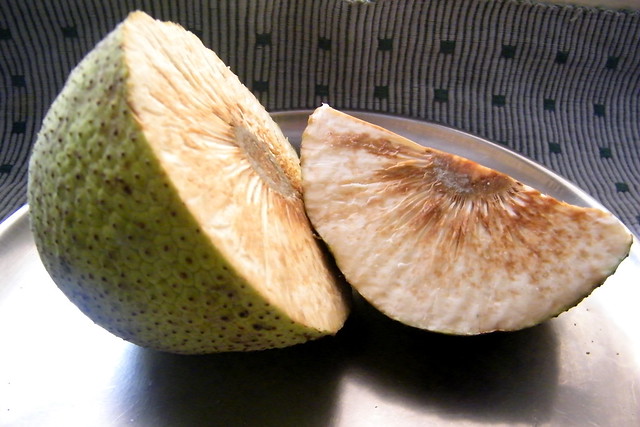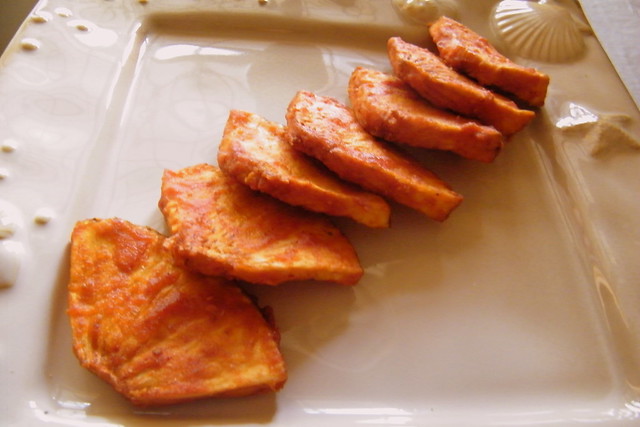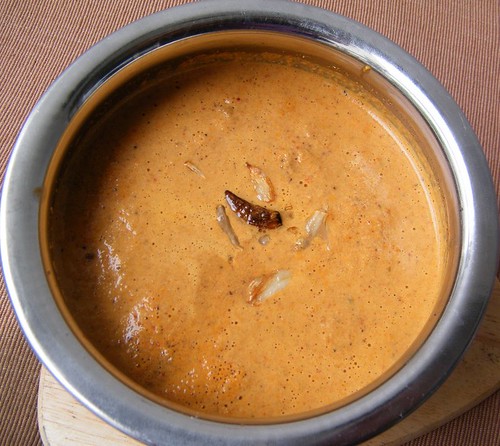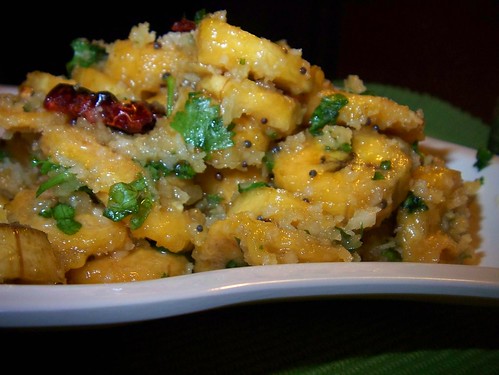Gowri / Gauri puja is celebrated by Konkanis and Kannadigas a day before Ganesh Chaturthi. Some families keep an idol of Gowri, others worship a printed picture. Among Konkanis, this day is also called 'Vayana puja'. Young girls and married women keep decorated coconuts and offer it to the Goddess. Then these coconuts are usually given to women older than you and you seek their blessings. Ma gifted me this silver Gauri that needs to be placed over a coconut. I have been using this for my puja for the last couple of years now.

I used to help my grandfather a lot with all the preparations for the puja, and the cooking was all done by Ma. We had the whole family come over, help with the cooking, especially for Ganesh Chaturthi and really enjoy the elaborate spread
Being in a place that is not so familiar with this puja, I have started celebrating it and call some friends over. The food cooked on this day is pretty simple, compared to the spread for Ganesh Chaturthi.
The main dish cooked for this puja is Patoli (paa-toh-lee). Its steamed in turmeric leaves and has a wonderful aroma. This dish is a favourite with my friends here, since its so new and different for them.

My dear Ma couriers the leaves across every year, since I haven't found any turmeric leaves here. I wrap it in a damp cloth and refrigerate it till I use it. Even if the leaves, turn a little yellow, they work beautifully and still have that distinct aroma.
Have a wonderful Gauri puja and Ganesh Chaturthi
Here's a step-by-step on making these patolis
Clean the turmeric leaves, wipe and place them in a plate. Grease the leaf with a little oil

Using your fingers, spread the maida paste over the leaf. It should not be too thin or too thick

Place a spoonful of the coconut-jaggery mixture on one side. You can do this vertically or horizontally

Fold the leaf in half (length-wise or width-wise, depending on how you placed the filling)

Place in a steamer and steam for 8-10 mins

Once done, gently lift one half of the leaf and serve with ghee

What you need -
(15 patolis)
15 turmeric leaves
For the filling
1.5 cups freshly grated coconut
3/4 cup grated jaggery (less or more depending on how sweet the jaggery is)
1/2 tsp powdered cardamom
For the paste
1 cup maida (rice flour can be used instead of maida, but maida is an easier option)
1.25 cups water approx
What you do with it -
In a non stick pan, add the jaggery and coconut and stir it over low heat till the moisture is all gone. Mine took about 15 mins on a really low flame
You can make this a day in advance
Mix the maida with the water, adding a little at a time, so you get a consistency of a dosa batter, not too thick, not too thin
Clean the leaves, wipe them and grease with a little oil
Spread the maida paste with you fingers over the leaves, keeping it as smooth as possible. This again should not be too thick
Place a spoonful of the coconut mixture on one side
Fold the leaves and steam it for about 8-10 mins
Gently open the leaf and enjoy your patoli with some ghee










